Samsung S95C review: taking QD-OLED to new heights
Samsung’s next-generation S95C Quantum Dot OLED TV delivers some of the best 4K HDR images we’ve seen to date

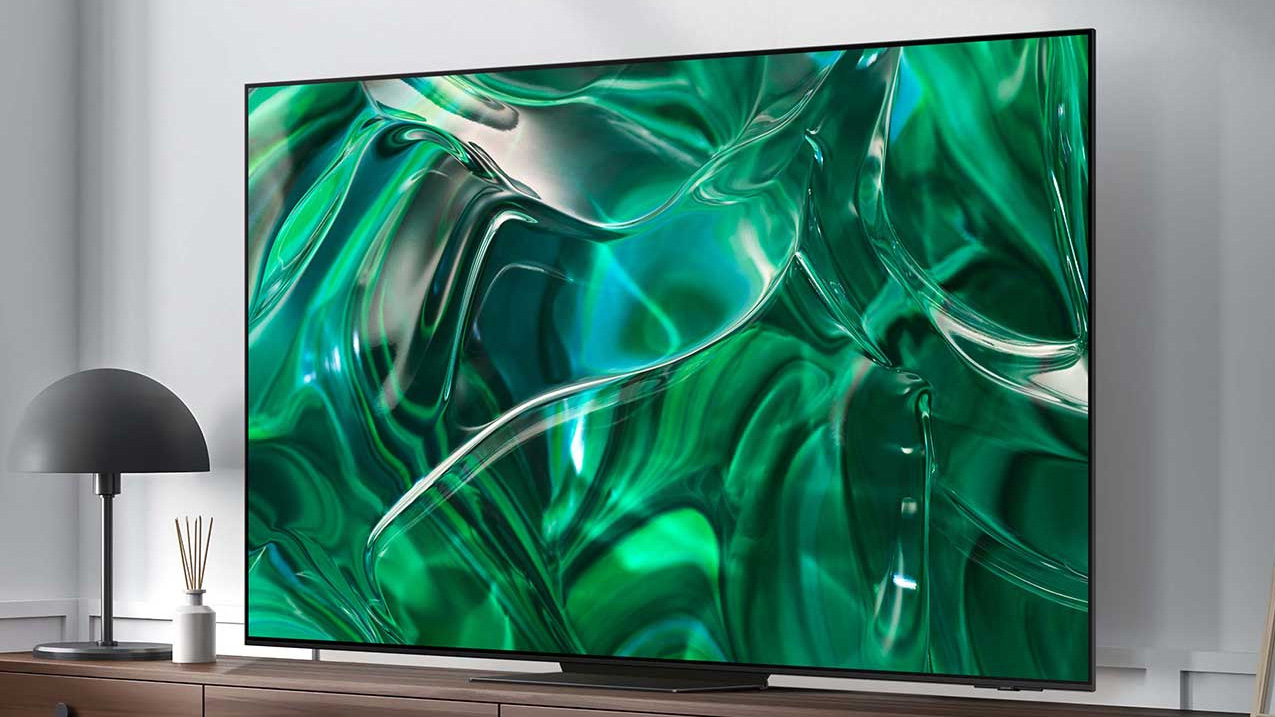
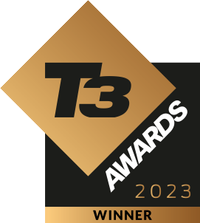
The Samsung S95C redefines the capabilities of Quantum Dot OLED, pushing this new display technology to greater levels of performance. The increased brightness and improved tone mapping deliver some of the best high dynamic range we’ve ever seen, and when combined with class-leading processing and exceptional image accuracy, the result is a 4K TV that sets the OLED bar very high indeed.
-
+
Exceptional super-bright 4K picture performance
-
+
Comprehensive gaming support (4x HDMI 2.1)
-
+
Stunning Infinity One design
-
-
S90C is cheaper (but less bright)
-
-
No Dolby Vision HDR
-
-
High-end price
Why you can trust T3

Samsung surprised everyone in 2022 with the launch of the S95B, its first OLED TV after a decade-long absence from the market. It utilised the brand’s Quantum Dot (QD) OLED technology, which promised brighter images and purer colours when compared to traditional OLED.
The S95B delivered on Samsung’s claims, although it did have a few minor issues when it came to the screen filter and its high dynamic range (HDR) tone mapping. But the new Samsung S95C takes QD-OLED to the next level, with a second-generation panel that produces a 40% increase in peak brightness. Wowzers.
As befitting a high-end model it also has a One Connect box, meaning the connections don't trail into the back of the TV itself, while Object Tracking Sound Plus with height speakers and multiple bass drivers gives a more immersive sonic experience than before.
But with the step-down Samsung S90C also just launched for less cash, and the earlier S95B now a relative bargain, does the latest and greatest S95C make sense to buy as one of the best OLED TVs of the year? Spoiler alert: with images this bright, yes, yes it does indeed...
Samsung S95C: Price & Availability
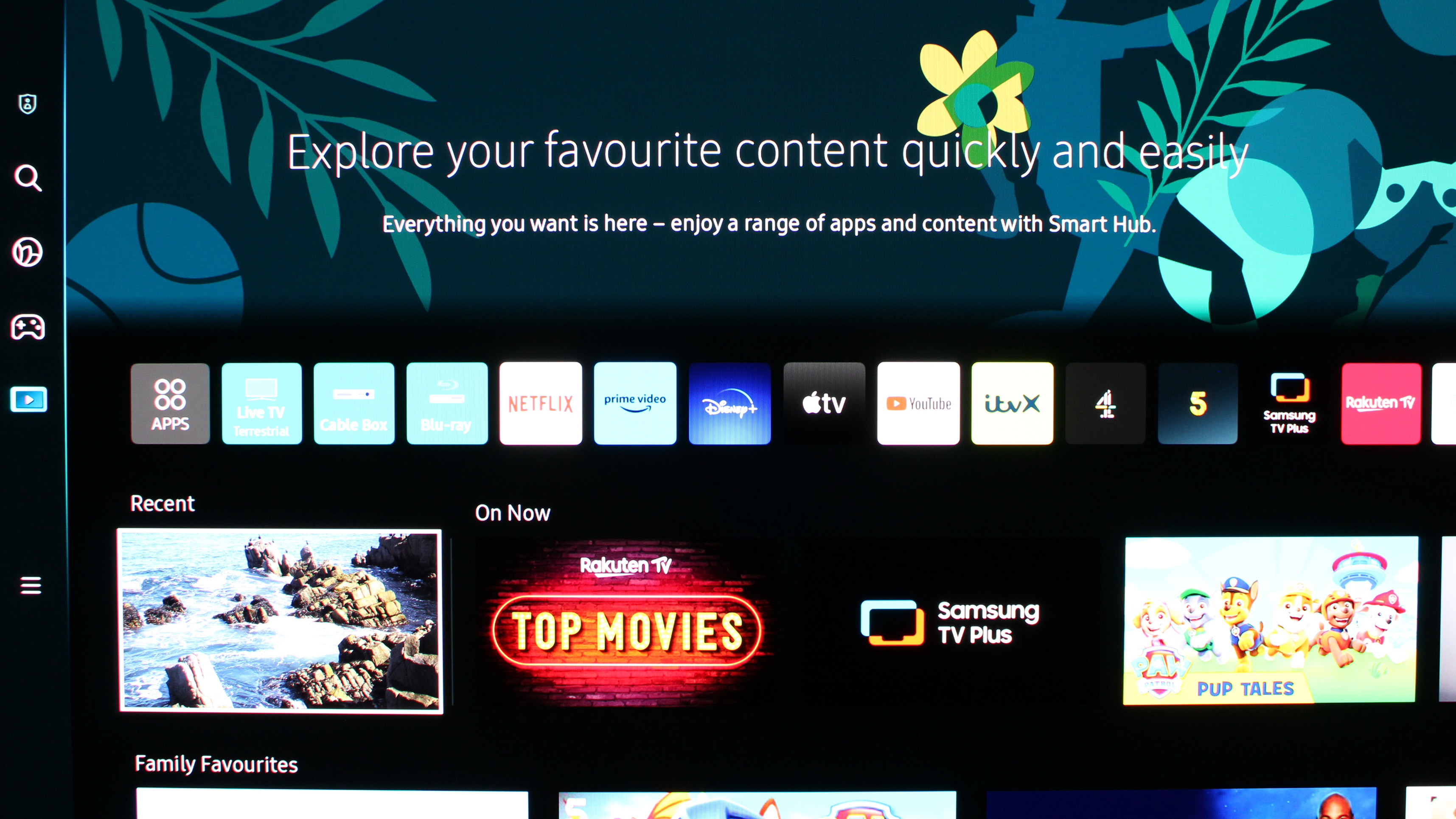
The Samsung S95C is on sale now, and available in three screen sizes: the 55-inch (QE55S95C) costs £2,699/$2,499; the 65-inch (QE65S95C), as tested here, retails for £3,599/$3,299; and the newly-added 77-inch (QE77S95C) will set you back £5,099/$4,499.
So, no, it’s not cheap, but a price premium is to be expected with a cutting-edge and feature-packed TV like this. The widget below will show you updated pricing for all three sizes. At the end of this review we'll compare to some of the obvious competition and cheaper alternatives, such as the S95C's predecessor.
SAMSUNG S95C REVIEW: FEATURES & WHAT’S NEW
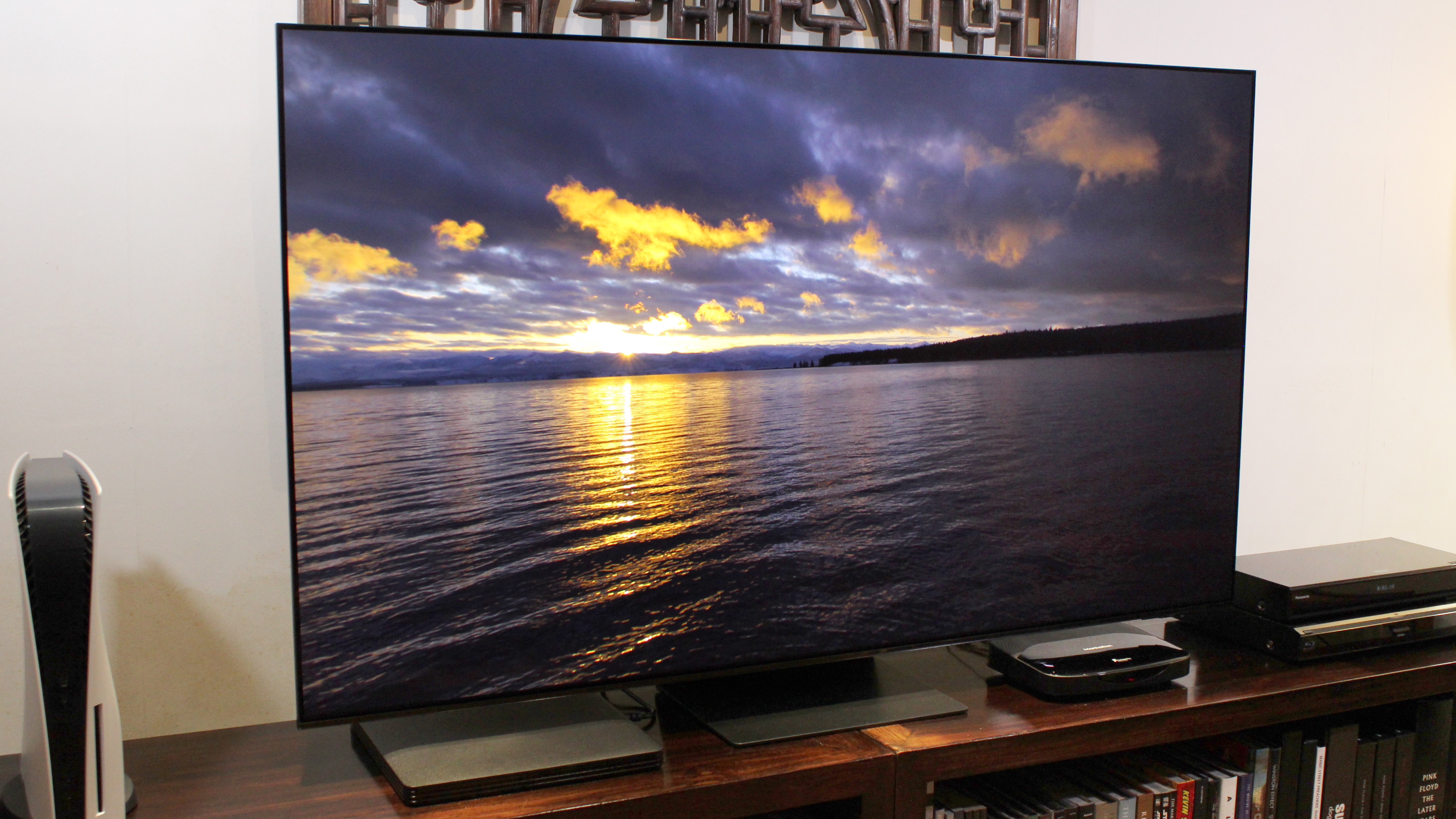
The Samsung S95C uses a second-generation Quantum Dot OLED (QD OLED) panel that still combines a blue OLED with Quantum Dot layers to create the extra red and green sub-pixels, but increases the peak brightness by up to 40% over the S95B to deliver more impactful HDR.
Another improvement, compared to the earlier model, is a new screen filter that rejects ambient light without adversely affecting the black levels and contrast performance. The tone mapping has also been improved to ensure the blacks aren’t crushed and the highlights don’t lose detail.
As with all OLED TVs, the optimal viewing angles are incredibly wide, while Samsung’s latest AI-enhanced Neural Quantum Processor adds cutting-edge upscaling and processing to get the best from any content – from highly compressed standard definition to native 4K material.
Samsung claims a peak brightness of 1,400 nits, which is exceptional for an OLED, and 100% of the wider DCI-P3 colour gamut. The S95C supports HDR10, hybrid log-gamma (HLG) and HDR10+ (Adaptive and Gaming), but sadly Samsung still doesn’t offer Dolby Vision.
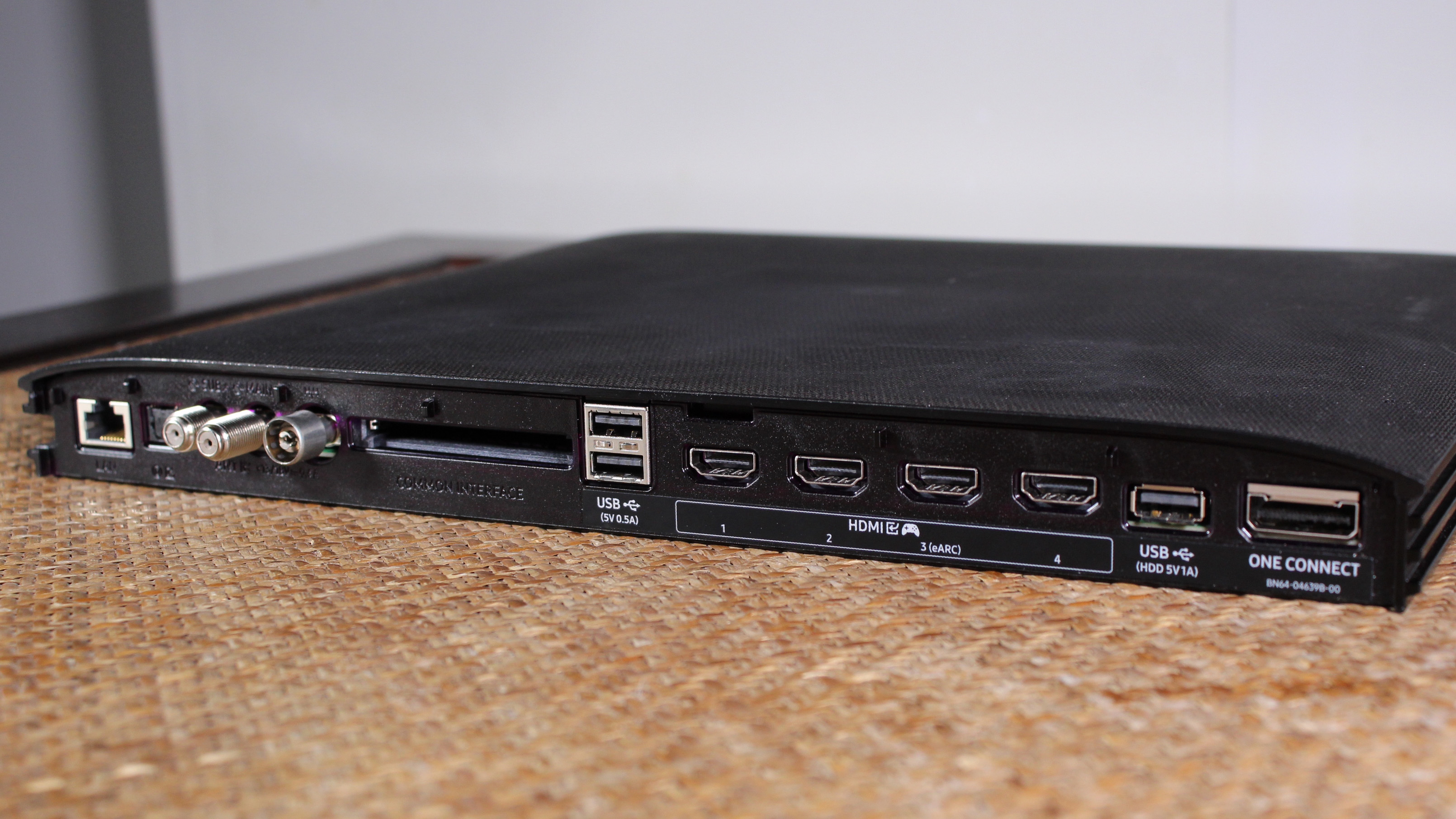
However, Samsung does include Dolby Atmos decoding, while the Object Tracking Sound Plus system uses a 4.2.2-channel speaker layout with height drivers. There’s also Space Fit Sound for room correction, and Q Symphony for seamless integration with supporting Samsung soundbars.
The most obvious new feature compared to the S95B is the inclusion of the One Connect Box for tidier cable management. The four HDMI inputs support frame rates up to 144Hz, VRR (Freesync Premium Pro and, unofficially, Nvidia G-Sync), and ALLM, with an input lag of 9.8ms.
There’s also a useful Game Bar that provides gaming information and settings, while the Tizen-powered smart platform remains as responsive and comprehensive as ever, with all the main streaming apps such as Netflix, Amazon Prime, Disney+, Apple TV, and the UK TV catch-up services.
Finally, Samsung’s Smart Calibration app allows you to get closer to the industry standards by automatically calibrating the TV using a supporting smartphone. It’s very clever, and actually works, although whether you need it will depend on the accuracy of the S95C out of the box.
SAMSUNG S95C REVIEW: PERFORMANCE
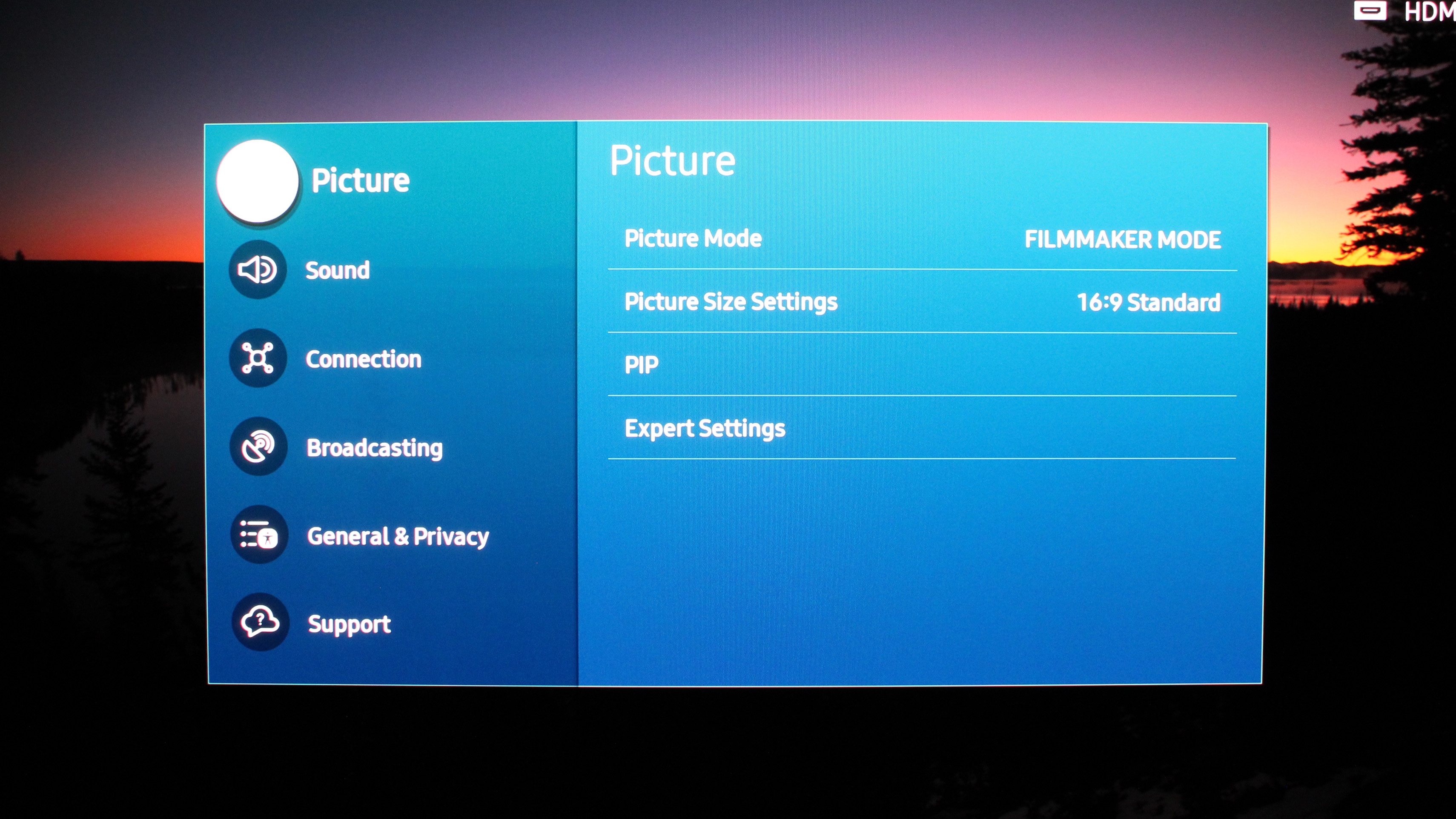
The Samsung S95C impresses immediately with its noticeably brighter QD-OLED panel, and the measurements match the marketing claims with 1,400 nits (on a 10% window; 274 nits on a full-field image). That's exceptional for any OLED TV.
When you combine the S95C’s improved brightness with OLED’s self-emissive pixels – that deliver inky blacks, detailed shadows, greater precision and incredibly wide viewing angles – you have a TV that can hold its own against any display technology. This is only enhanced further with the addition of a wide colour gamut that covers 100% of the DCI-P3 industry standard for HDR.
Of course, all these strengths are useless if they can’t be delivered in an accurate manner that meets the industry standards for video distribution. Thankfully there are no worries here, and in the Filmmaker Mode the S95C delivers a reference level of accuracy in HDR (and in standard SDR, too). The tone mapping is also spot on, too, unlike the earlier S95B model.
The screen filter on the S95C has also been improved compared to the earlier generation, which tended to make blacks look grey when watching content in a room with a lot of ambient light. This is no longer the case, with the upgraded filter ensuring blacks remain black, regardless of the amount of light in the room. In addition, panel uniformity is excellent, with no signs of banding.
As a result, the S95C delivers natural-looking colours, fine detailing, deep blacks, and well-rendered shadows. This also applies to HDR, where precise tone-mapping guarantees fidelity when it comes to reproducing the darkest shadows, or the brightest highlights. The absence of any crush in the blacks or clipping in the whites produces a picture with remarkable levels of contrast.

The TV's 4K Neural Quantum Processor combines with the superior contrast and enhanced colours to create 4K images that are full of detail but free of any distracting artefacts. Due to this wizardry, the S95C can upscale or enhance lower-resolution or compressed content with remarkable precision. The use of Quantum Dots also generates colours that are purer, richer and more subtle.
All of these factors combine to produce fantastic images, and HDR that is among the best we’ve ever seen. It’s no exaggeration to say the S95C redefines what an OLED TV can do, and while LCD TVs can certainly deliver higher levels of brightness, they simply can’t compete when it comes to the deep blacks and pixel-precise specular highlights produced by this Samsung.
The motion handling is also excellent, which means movies and TV dramas delivered at 24p benefit from movement that is rendered without any unwanted judder or artefacts. There’s extra processing for fast-paced sports if necessary, and support for 144Hz higher frame-rate gaming. Lastly, there were no issues with image retention or screen burn during our testing period.
*To test the Samsung S95C we used Portrait Displays Calman colour calibration software.
SAMSUNG S95C REVIEW: DESIGN & USABILITY
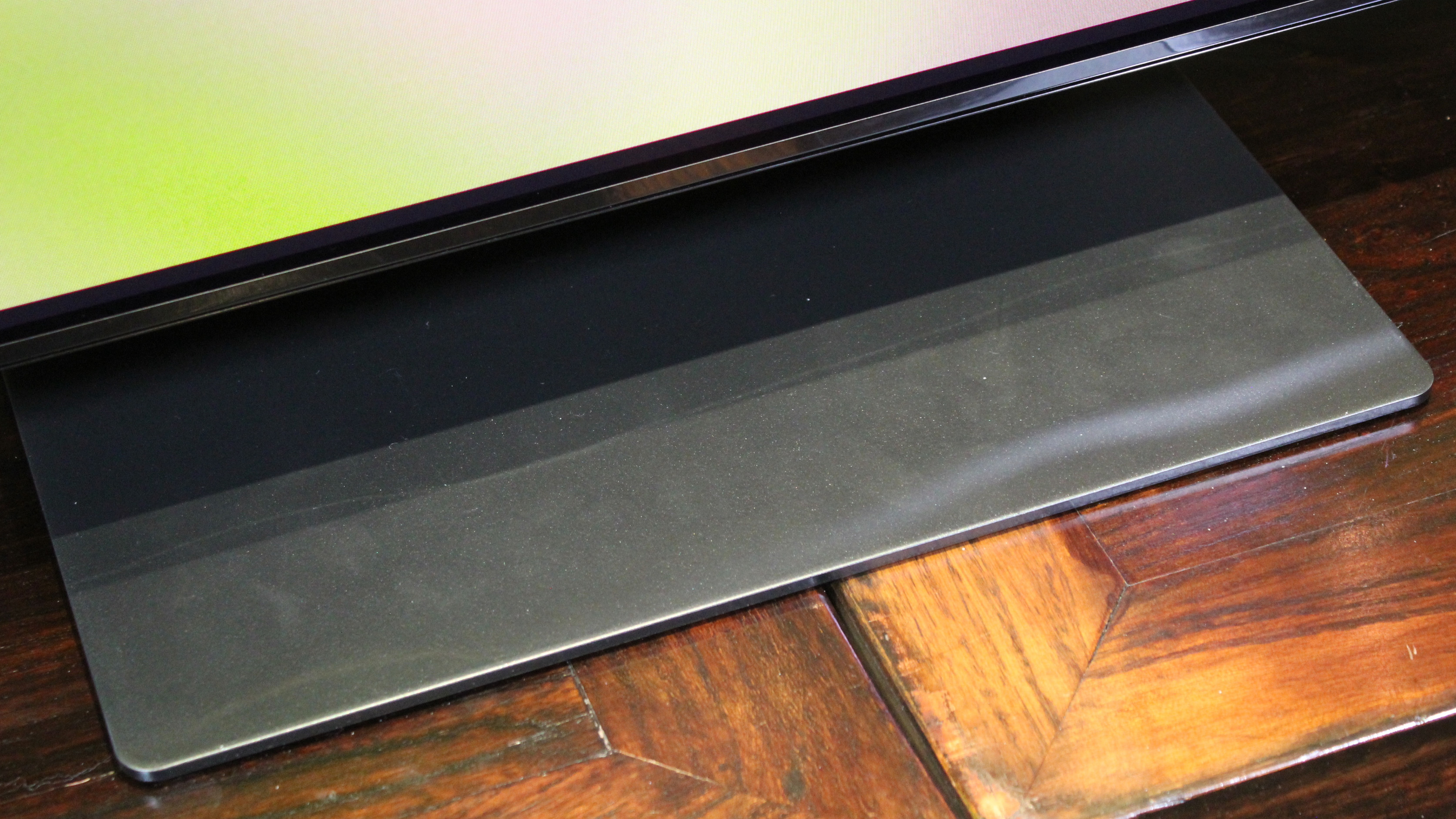
The Samsung S95C looks stunning, thanks to its ultra-sleek Infinity One design that uses a panel only 10mm deep from top to bottom. Despite these svelte proportions, the build quality is excellent, and the all-metal stand provides solid support. It also has a smaller footprint, allowing you to install the TV on a narrower surface, although you can also wall-mount if that’s your preference.
If you do decide to wall-mount, the S95C will look amazing with its super-slim panel, and thanks to the One Connect box there’s only a single thin cable attached to the TV. All the other cables are plugged into the box, which can be stored elsewhere to keep things tidy. If you’re using the included stand, there’s also the option to attach the box to the stand’s rear, and thus out of sight.
In addition to the four HDMI inputs there are also two USB 2.0 ports, twin tuners for terrestrial and satellite broadcasts, a CI slot, an optical digital output, and an Ethernet port. In terms of wireless connectivity, there's Wi-Fi, Bluetooth and support for Apple AirPlay 2.
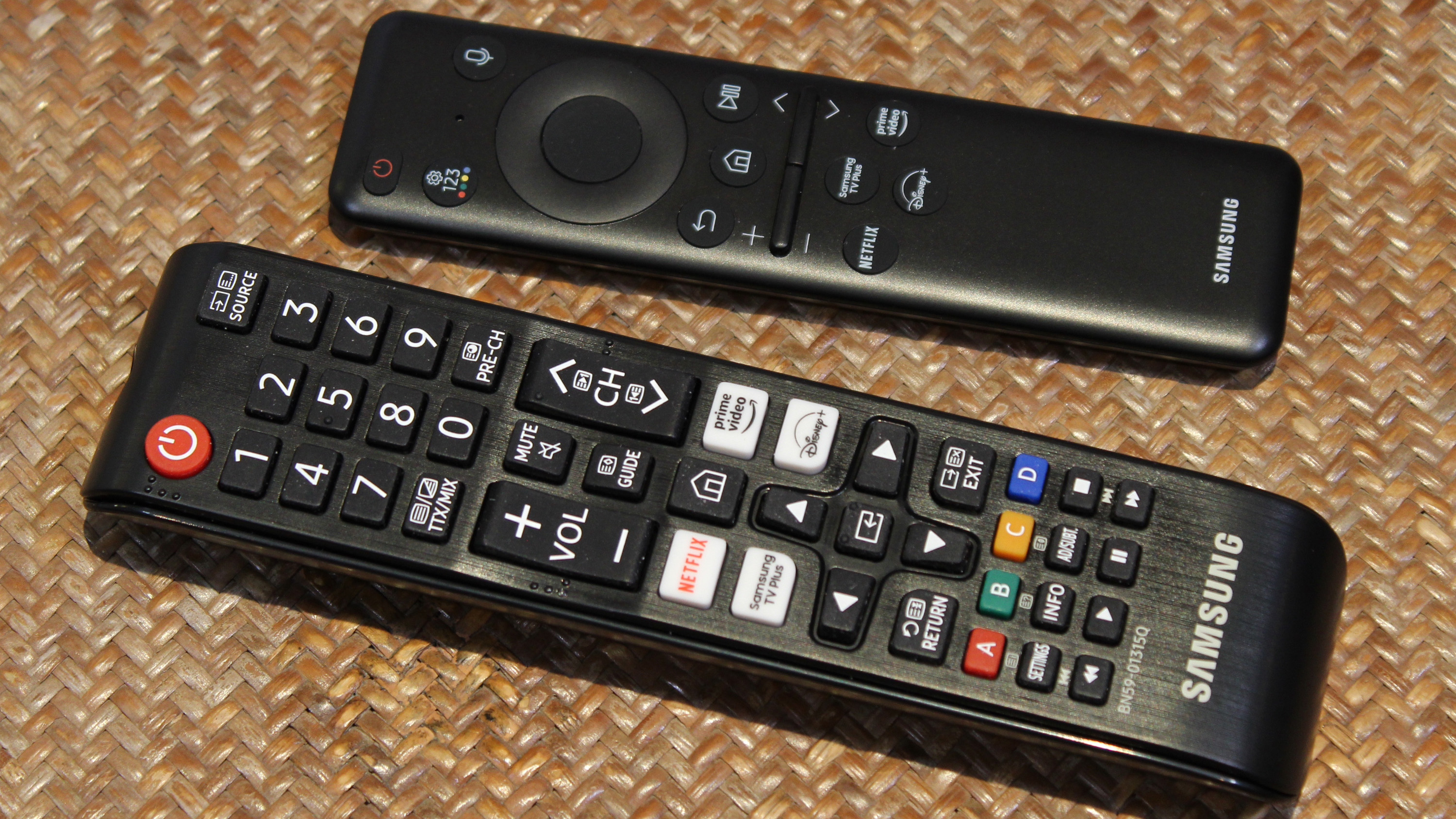
The S95C ships with two controllers: a standard black zapper covered in a myriad of buttons, and the simplified Solar Cell remote that’s designed for day-to-day use. The latter is very eco-friendly, not only because it’s made of recycled plastic, but also because the batteries recharge using a solar panel, along with repurposing any Wi-Fi signals bouncing around your house.
In terms of other remote options, there’s the SmartThings app, which not only provides a degree of control, but also makes setup easier, taking you through the process step by step. There’s a degree of voice control from built-in Bixby, plus the ability to work with Amazon Alexa and Google Assistant, and you can even access Apple's Siri via AirPlay 2.
The S95C sounds surprisingly good considering its slender proportions leave little room for any speakers. In fact, it’s a miracle that Samsung has managed to cram anything in at all, let alone six drivers, six woofers, and 70W of amplification. The Object Tracking Sound Plus tech certainly makes the most of the speakers at its disposal, producing an expansive soundstage with height.
The overall delivery is well-balanced, with clear dialogue and a sense of spatial awareness that gives the audio more dimensionality. Any soundtrack is enhanced, but Dolby Atmos produces a more immersive sonic experience thanks to psychoacoustic processing. There’s also a decent amount of bass considering the physical limitations introduced by the TV’s incredibly slim panel.
Of course, while the S95C’s sound system is fine for most TV viewing, but if you want greater scale, deeper bass, and real immersion you should invest in one of the best soundbars. If you do decide to add a soundbar, you might as well go for a Samsung model that includes Q Symphony, because then it can seamlessly integrate with the S95C and utilise all the speakers – including those in the TV.
SAMSUNG S95C REVIEW: VERDICT
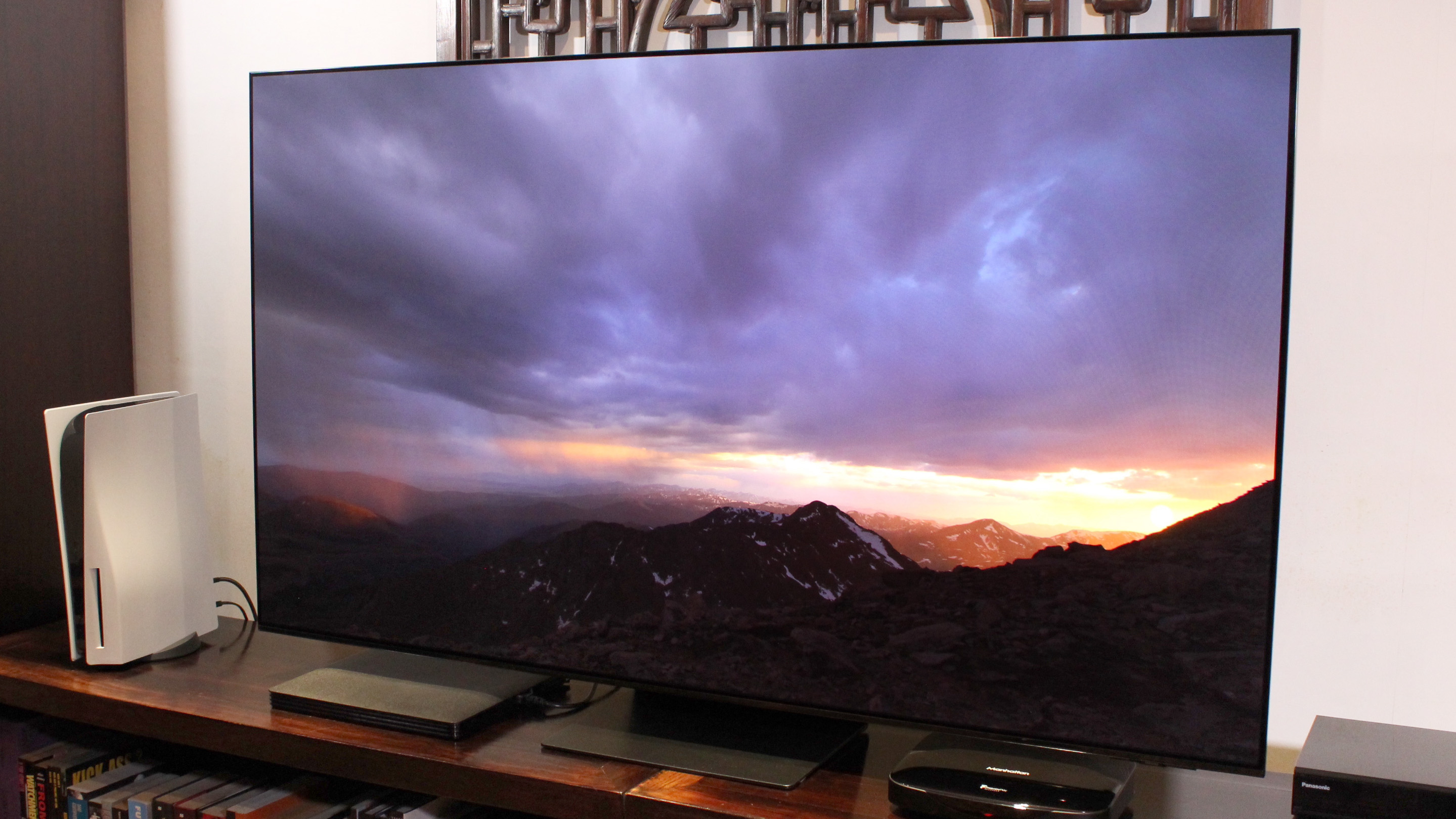
The Samsung S95C is a QD-OLED gamer-changer when it comes to HDR brightness, not just in terms of specular highlights, but also with full-screen images. The brighter Quantum Dot-powered panel really delivers the goods, producing exceptional images that are bright, accurate and colourful. The result is HDR that's among the best we’ve seen, rivalling any OLED TV on the market.
The strengths of the S95C don’t end with brighter highlights, more saturated colours and reference levels of accuracy. There are also all the usual benefits of OLED, such as deep blacks, excellent shadow detail and incredibly wide viewing angles. An improved screen filter ensures superior contrast with ambient light, while peerless processing squeezes details out of every last pixel.
A nearly flawless package is finished off with a stunning design, solid build quality and useful One Connect box with extensive connectivity. The sound system is remarkably good considering the space available for speakers, and the smart platform remains comprehensive. A host of next-gen gaming features round out what has to be one of the best TVs currently available.
ALSO CONSIDER
The obvious alternative is Sony’s new A95L, which uses the same Samsung-made OLED panel, but adds the brand’s proprietary processing and Acoustic Surface technology, plus there’s support for Dolby Vision. The release date and pricing hasn’t been announced at the time of writing, but Sony will offer the same three screen sizes, and it should be an equally impressive performer when it hits stores.
The LG OLED G3 is another possible competitor, and while it uses a more traditional WRGB panel, the addition of a Micro Lens Array (MLA) boosts the peak brightness to levels that match the S95C. There’s also a sleek design that’s primarily aimed at wall-mounting, Dolby Vision support, and the excellent webOS smart platform. The G3 is priced just below the S95C, too.
For those who prefer an LCD TV, the Samsung QN95C 4K Neo QLED is definitely worth considering. It has similar pricing to the S95C, offers four screen sizes, and features an improved Mini-LED backlight. It drops the One Connect box, but has the same smart platform, gaming features and Object Tracking Sound Plus as the S95C.
Finally, if you’re looking for something a bit more affordable, the cheaper Samsung S90C is an upgraded version of last year’s S95B (also included below for price comparison reasons, as it's far cheaper). It doesn’t include the One Connect box, has a less-capable sound system, and the brightness caps out at just over 1,000 nits, but otherwise it’s still an excellent performer and remains feature-packed.
Sign up to the T3 newsletter for smarter living straight to your inbox
Get all the latest news, reviews, deals and buying guides on gorgeous tech, home and active products from the T3 experts
Steve Withers is a professional calibrator and freelance journalist who regularly contributes to T3, reviewing audio and video products, and writing articles. Steve has been writing about audio and video products for over ten years and, along with T3, he also contributes to TechRadar, Trusted Reviews, Expert Reviews, AVForums, Pocket-lint, Home Cinema Choice, and Wired. Steve is Level 2 certified with THX, the Imaging Science Foundation (ISF) and the Home Acoustics Alliance (HAA). As such, he remains abreast of all AV technology developments and the latest industry standards as we transition into a new era in home video and audio.
-
 Leaked AirPods prototype looks like Nothing... literally
Leaked AirPods prototype looks like Nothing... literallyAnd we are here for them
By Britta O'Boyle Published
-
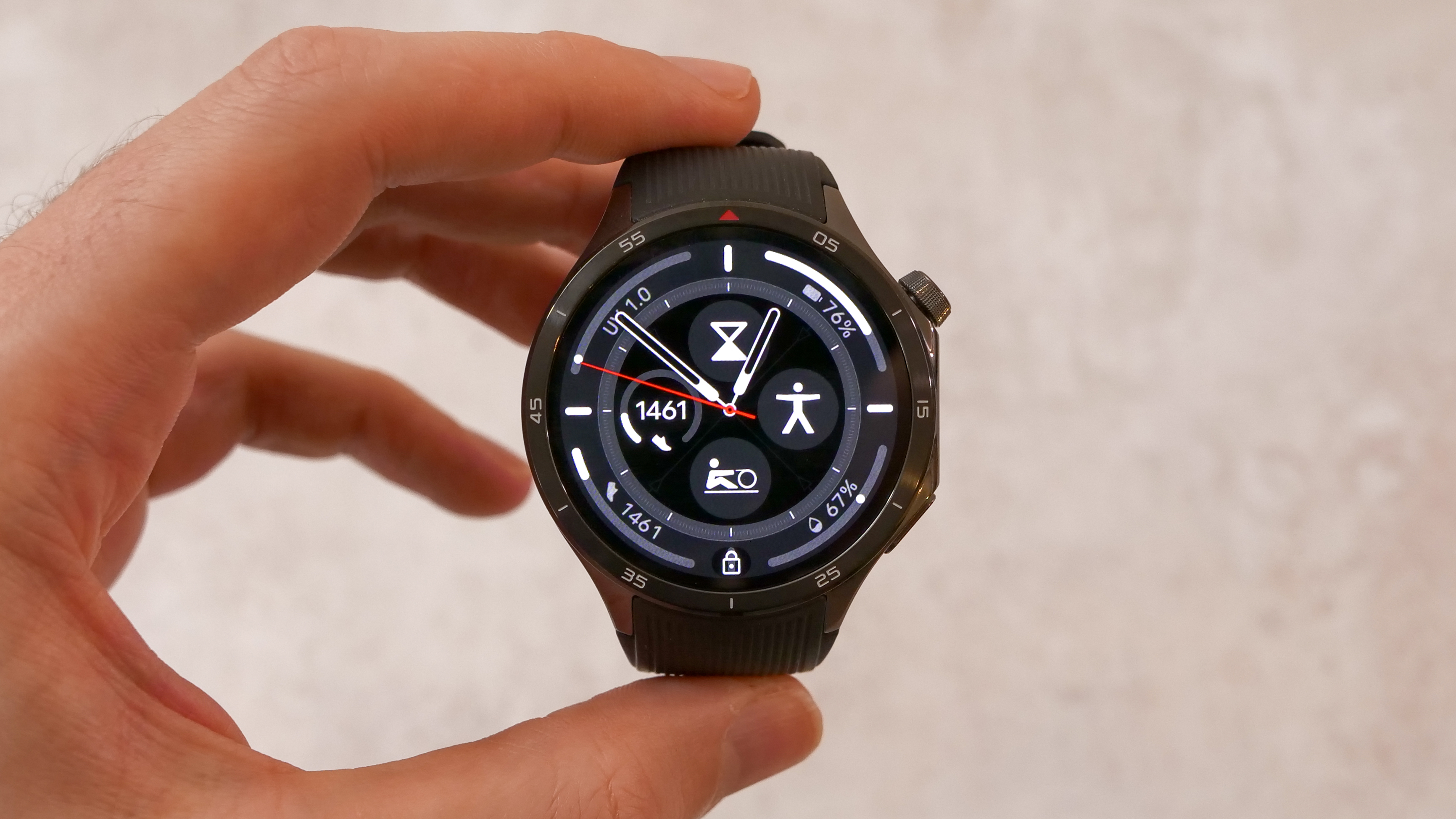 OnePlus Watch 3 lands in the UK with a flurry of freebies and a huge discount
OnePlus Watch 3 lands in the UK with a flurry of freebies and a huge discountThe new titanium-clad smartwatch brings 120-hour battery life, ECG health checks, and some serious launch offers
By Matt Kollat Published
-
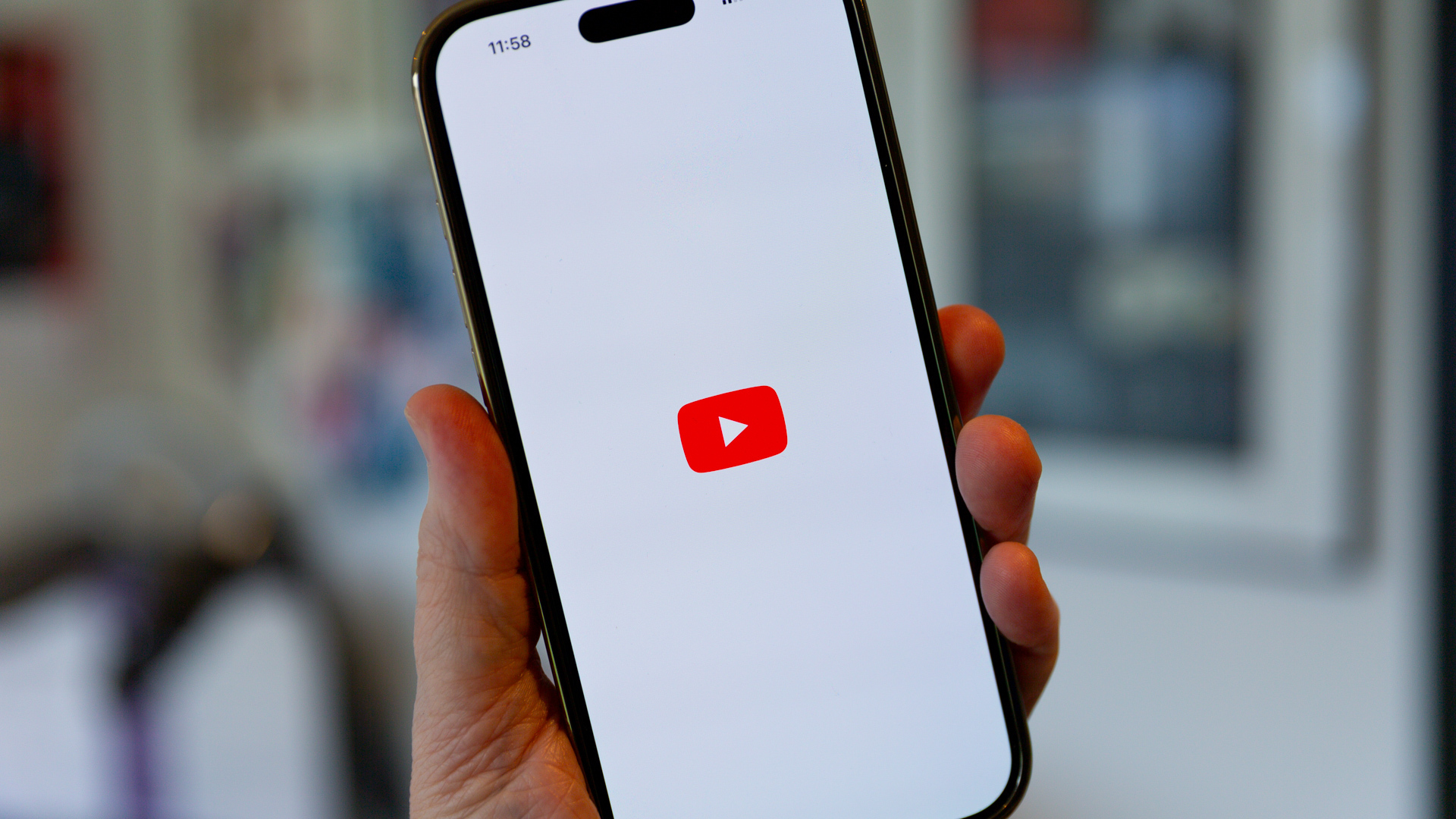 Future YouTube feature could put an end to your doomscrolling
Future YouTube feature could put an end to your doomscrollingAnd that's something we would love to see
By Britta O'Boyle Published